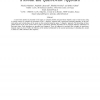Free Online Productivity Tools
i2Speak
i2Symbol
i2OCR
iTex2Img
iWeb2Print
iWeb2Shot
i2Type
iPdf2Split
iPdf2Merge
i2Bopomofo
i2Arabic
i2Style
i2Image
i2PDF
iLatex2Rtf
Sci2ools
ICARCV
2006
IEEE
2006
IEEE
Road Scene Analysis by Stereovision: a Robust and Quasi-Dense Approach
A stereovision method is presented in this paper, to compute reliable and quasi-dense disparity maps of road scenes using in-vehicle cameras. It combines the advantages of the "v-disparity" approach and a quasi-dense matching algorithm. In this aim, road surface and vertical planes of the scene are first extracted using the sparse "v-disparity" approach. The knowledge of these global surfaces of the scene is then used to guide a quasi-dense matching algorithm and to propagate disparity information on horizontal edges. Both algorithms are presented and compared. Then, our approach is presented and examples of quasi-dense disparity maps are given. Finally, the efficiency of the method is illustrated by the accurate positioning of a bounding box around a vehicle in a bad contrasted video sequence.
| Added | 11 Jun 2010 |
| Updated | 11 Jun 2010 |
| Type | Conference |
| Year | 2006 |
| Where | ICARCV |
| Authors | Nicolas Hautière, Raphaël Labayrade, Mathias Perrollaz, Didier Aubert |
Comments (0)

